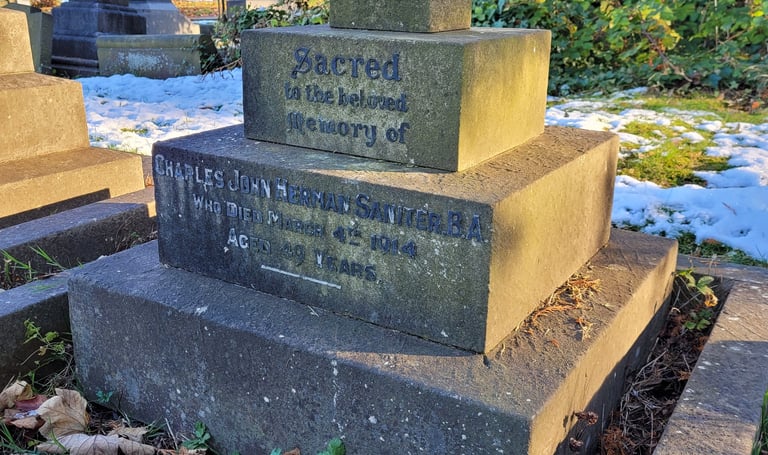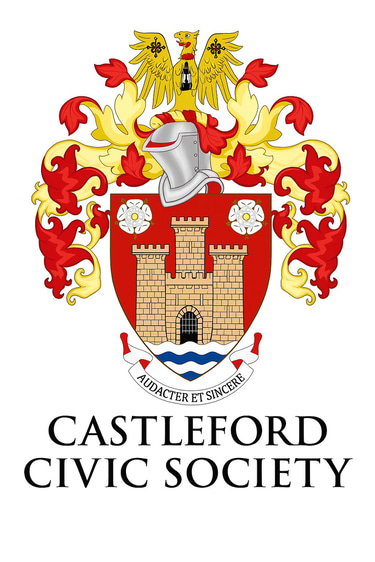Download your Cemetery Trail Booklet here.
Castleford Cemetery opened in October 1857, initially on the north side of Healdfield Road – which for some years afterwards was renamed Cemetery Road – followed by the ‘new’ cemetery on the hillside to the south a few years later. Following a series of parliamentary acts during the 1850s, which allowed the creation of rate-funded bodies to establish and run municipal cemeteries, Castleford Burial Board was set up in 1853 in response to the insanitary state of the overwhelmed All Saints parish church graveyard.
A government inspector visiting the churchyard in December 1852 reported “numerous bones and fragments of bones, from almost all parts of the human frame – including several jaws with the teeth in, very slightly decomposed” poking out of the ground where one burial.....more
CASTLEFORD CEMETERY: AN INTRODUCTION

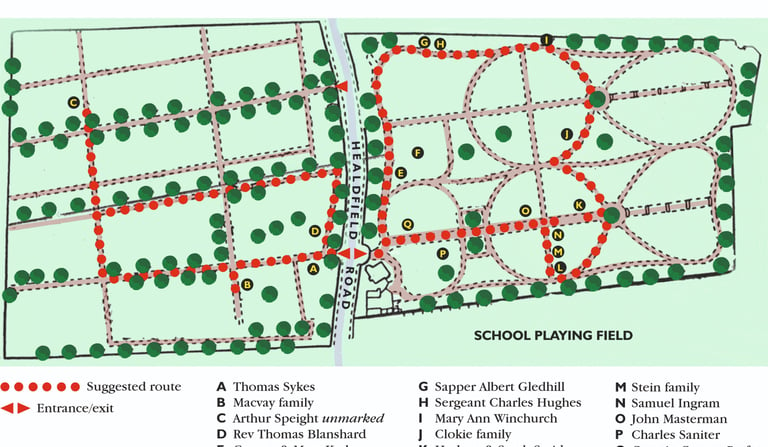

Cemetery Trail Stories
Search below for extended notes describing in detail the families and characters featured in our Cemetery Trail Booklet.
Click 'more' in each section to download the fully detailed document.
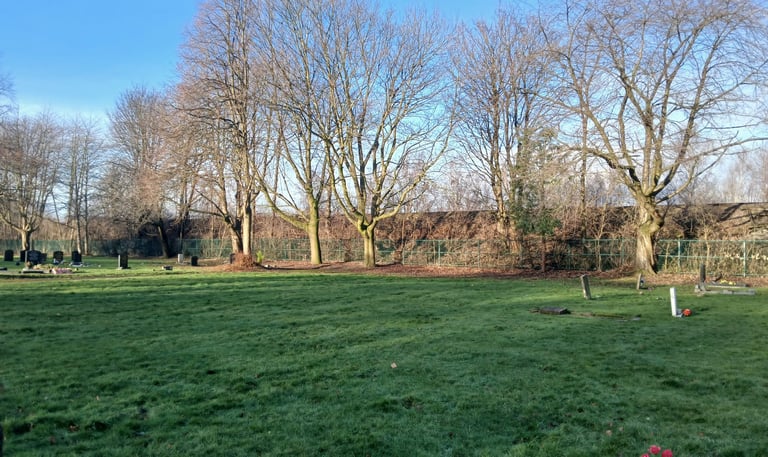

Cemetery Trail grave location C
The early 1930s were, by British standards, a time of political turbulence. The country was ruled by an unstable ‘National Government’ drawn from all three main parties following the collapse, in 1931, of prime minister Ramsay MacDonald’s minority Labour administration. The 1926 General Strike was still fresh in many minds and feelings from that time were still potent. The rise of fascism in Italy, Spain and Germany was echoed by the establishment of Oswald Mosley’s British Union of Fascists, while the Communist Party of Great Britain (CPGB) was at its strongest in this period, its membership having been boosted by many miners during the General Strike. Aside from the traditional party rivalries and the well-known and widely based opposition to Mosley’s ‘Blackshirts’, there was a particularly resentful relationship between Labour and the communists, with the former ............more
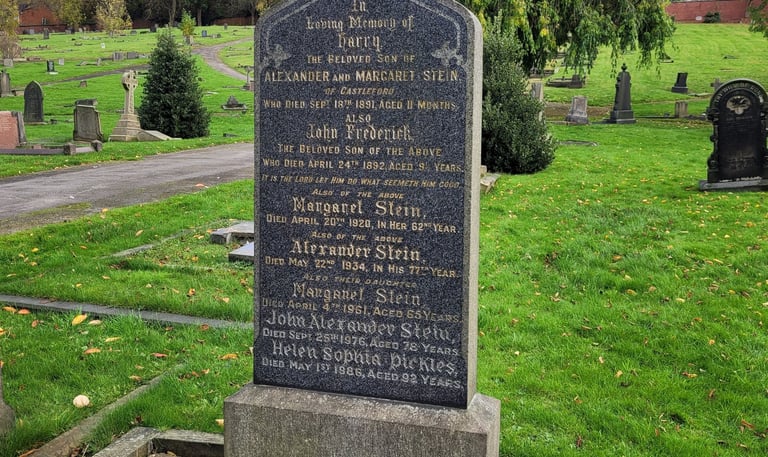

DAYS OF CONFLICT: THE GERMAN BUTCHERS RIOT
Cemetery Trail grave locations E and M
From the late 19th and into the first half of the 20th century, a distinctive feature of butchers shops in Castleford and numerous other towns was that many were owned by families of German origin. For decades, names such as Farber, Karle, Schumm and Stein were familiar to shoppers in the town, with the last-named continuing in business until the early 1980s. The great majority of these families emigrated from a remarkably small area of south-western Germany, centred upon the town of Kunzelsau in Baden-Württemberg, and were mainly specialist pork butchers. Of the Stein family members named on the gravestone, it will have been Margaret senior and Alexander who made the journey from Germany to England. Alexander was recorded as working in Bradford in 1881 before moving to Wakefield, where he married Margaret,....... more
DAYS OF CONFLICT: THE CONTROVERSIAL CASE OF ARTHUR SPEIGHT.
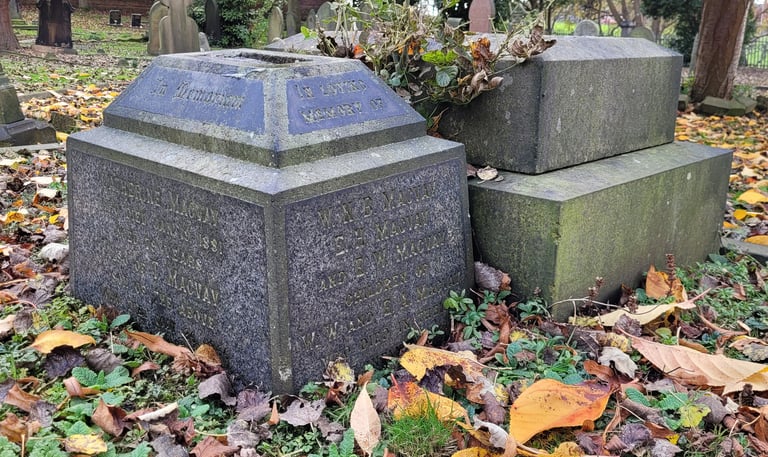

BOTTLE-MAKING: GLOBAL PIONEERS SYKES AND MACVAY
Cemetery Trail grave locations A and B
In 1829, four managers from the Hunslet glass works of Joshua Bower & Sons bought a disused pewter furnace on the banks of the River Calder at Whitwood Mere, a short distance to the west of Castleford and adjacent to the pottery recently vacated by David Dunderdale’s fine china company. Contemporary legend had it that the Leeds glassmakers spotted the furnace on a fishing trip and considered it the ideal location for the company’s planned expansion into bottle manufacture. Their hunch proved correct, for not only did their Black Flag works thrive but in the next two decades, helped by the modernisation of the Aire & Calder Navigation in the early 1830s and arrival of the railway in 1840, several more followed, quickly cementing Castleford as the centre of the Yorkshire bottlemaking industry. Plentiful sources of coal, fine sand and limestone had already seen glass furnaces.......more
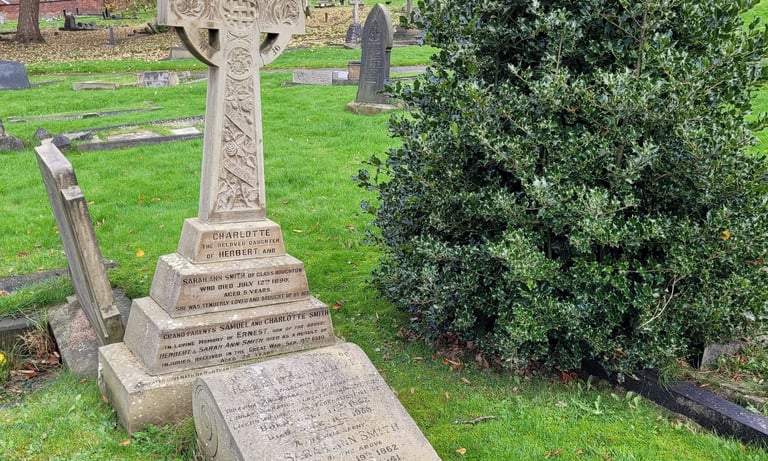

HERBERT SMITH: MINEWORKERS’ CHAMPION
Cemetery Trail grave location K
Coal mining in the 19th and early 20th century was a strength-sapping and hazardous occupation which required collective effort and trust between workmates. This fostered a strong sense of identity and spirit of unity among miners and, as a result, they were one of the first workforces to develop effective trade unions. Initially, mining unions were organised on a local and regional basis – there was not a single national union until the industry was nationalised in 1948 – but nevertheless, through close co-operation between their regional organisations, the miners were able to wield power on a national scale. This was well illustrated at the time of the General Strike of 1926, driven in no small part by the leadership of Herbert Smith.
A good argument can be made that Smith was the man who fired the starting gun on the General Strike, courtesy of two bluntly stated ....more

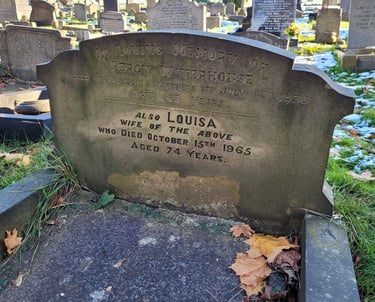
PERCY WATERHOUSE AND THE 1930 HICKSONS EXPLOSION
Cemetery Trail grave location F
Chemical manufacturing began in Castleford in 1863, when Hunt Brothers established a plant on Cinder Lane overlooking the confluence of the Rivers Aire and Calder. This remained the town’s only chemical works for more than half a century until, in 1915, prompted by a government directive, Hickson & Partners acquired a cricket field and allotments off Wheldon Road. There they built a plant to produce TNT to meet the huge demand created by the First World War, for which their existing works in Wakefield had insufficient capacity. TNT manufacture ceased soon after the war and output switched to sulphuric acid, benzole and ingredients for textile dyes, expanding on to the site of the former Breffitt & Co bottle works on the banks of the River Aire. Locally mined coal was one of the main ....more


THE TOLL OF WAR: MARY ANN WINCHURCH
Cemetery Trail grave location I
The story of women stepping up to work in many usually male-dominated industries during the two world wars is well known and is commemorated by such as the Women of Steel sculpture in Sheffield and the Barnbow Lasses memorial at Cross Gates. The latter, which remembers 35 victims of an explosion at the munitions factory in 1916, testifies to the dangers some of these women faced, a world away from the largely home-based, domestic lives most of them were living prior to the outbreak of hostilities.
Mary Ann Winchurch was one of the thousands of women who swapped home and hearth for the hazardous business of weapons production – and on 13 October 1917 she paid for it with her life. Yet little is known of what happened to her beyond the rudimentary details on her gravestone, for even major disasters such as the Barnbow explosion were hushed up, not only .... more
METHODISM’S REMARKABLE IMPACT:
THOMAS BLANSHARD
Cemetery Trail grave location D
The Reverend Thomas William Blanshard’s ministry in Castleford lasted only two years before his untimely death at the age of 44 but, nevertheless, his time here coincided with a period of quite remarkable influence for nonconformist religion – and Methodism in particular – in this and many similar industrial towns. The first Wesleyan chapel, built on a former orchard just off Aire Street, opened in what was still little more than a village in 1815, yet when Blanshard arrived from his previous posting in Otley 60 years later, there were ten Methodist places of worship in Castleford itself, plus more than a dozen in surrounding villages, and the number was still growing. By this time the original Methodist church had split into competing Wesleyan, Primitive Methodist and United Methodist sects......more
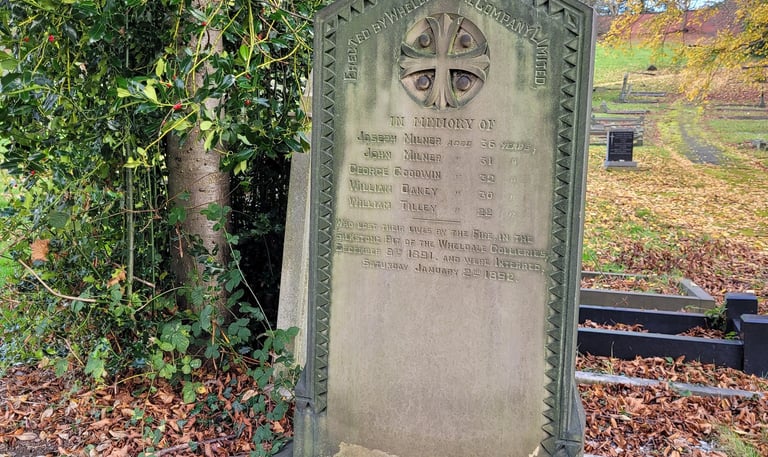

COAL MINING’S HAZARDOUS LEGACY:
THE WHELDALE FIRE
Cemetery Trail grave location L
Although coal had been dug in small quantities from shallow outcrops in the Redhill and Glasshoughton areas since at least the 16th century, it was not until the development of steam technology for winding, water pumping and transport in the third quarter of the 19th century that mining on a substantial scale became possible in the thicker seams which lay deep beneath Castleford. Collieries at Wheldale (began production 1868), Glasshoughton (1868) and Fryston (1873) supplied coal for the town’s already thriving glass, pottery and chemical industries, while the railways and waterways transported it around the country and overseas. The pits provided employment not just for local men and boys but also drew families from less prosperous coalfield areas, especially the ‘Black Country’ ....more
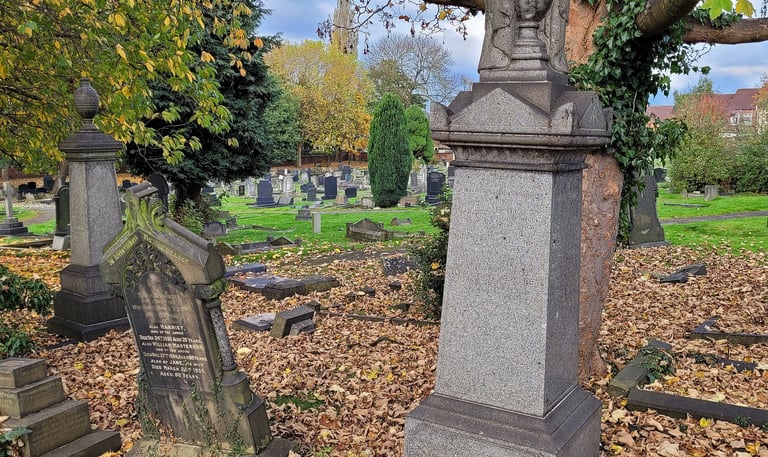



Cemetery Trail grave locations J and O
Much of Castleford sits on a thick bed of clay, so small-scale domestic pottery and roof tile production had probably taken place since medieval times. The aptly named John Clay began producing tiles and bricks at a site off Methley Road in 1724; this subsequently passed through the hands of several operators including Nathaniel English and William Thompson, who took over the site in 1783, named it the Mere (sometimes spelled Mear) Pottery and began producing domestic tableware alongside the brick and tile operation. In 1790, they in turn sold the business to Leeds cloth maker David Dunderdale, who transformed the site into a major producer of fine wares which were soon sold throughout the country and exported to Europe and the United States. His Castleford Pottery business used Cornish china clay ....more
Cemetery Trail grave location G
Albert Gledhill was born in February 1919, in Glasshoughton, shortly after his father George had completed his First World War service and received his British War and Victory medals. Like many boys in the village, on leaving school he began working at Glasshoughton Colliery, where he trained as a fitter, a position which would have raised him a little above the coal face hewers in both status and, to a degree, pay.
Upon the outbreak of the Second World War, Albert headed to the recruiting office on Eastgate, in Leeds, to sign up for the forces. He would have probably had little idea what role he could be about to play in the conflict but, at the same time, might not have been surprised that in order for the best use to be made of the skills he had learned at the pit, he was posted to the Royal Engineers ....more
THE TOLL OF WAR: SAPPER ALBERT GLEDHILL
POTTERY: THE CLOKIE AND MASTERMAN FAMILIES

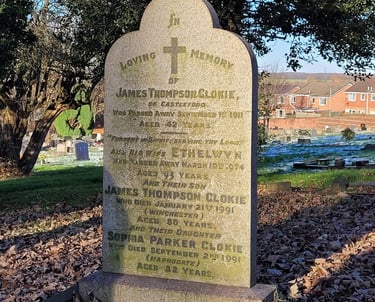
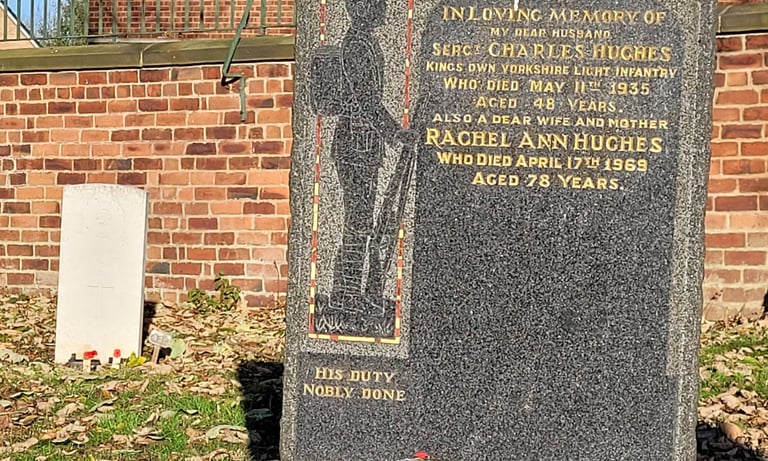


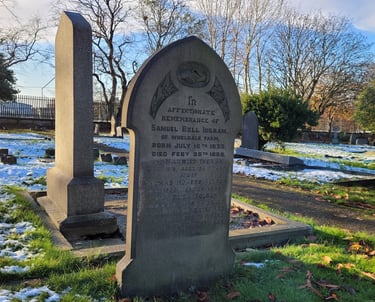
Cemetery Trail grave location H
The ‘war to end all wars’ was 17 years in the past (and the second global conflict little more than four years in the future) when Charles Hughes died in May 1935, yet he was surely as much a casualty of the First World War as the thousands of men who lost their lives in the trenches of Northern France and Belgium.
In 1917, 30-year-old Sergeant Hughes led a company of the King’s Own Yorkshire Light Infantry in an attack on a German trench. They achieved their objective of capturing the position but, in response, the surviving enemy troops released a volley of mustard gas. Although Hughes and his comrades were equipped with gas masks, these proved insufficient to protect them against the poisonous fumes.
Like so many Castleford men who enlisted in response ....more
THE TOLL OF WAR: SERGEANT CHARLES HUGHES
Cemetery Trail grave location N
For hundreds of years, Castleford was an essentially agricultural village, where no more than a few hundred people eked out a subsistence living from the land. Five communally-tilled arable fields, shared livestock pasture and riverside meadow for winter fodder surrounded the village – and it was not until the second decade of the 19th century that the numerous small landholdings were finally amalgamated and then divided up into a handful of privately-owned farms. Some of these so-called enclosure farms, with their characteristic brick-built house and standard range of outbuildings, can still be seen near the town at Ackton Pastures, Methley Bridge, Park Farm and Willow Grove, for example.
By the time these farms were established, potteries ....more
FARMING: SAMUEL INGRAM AND WHELDALE FARM
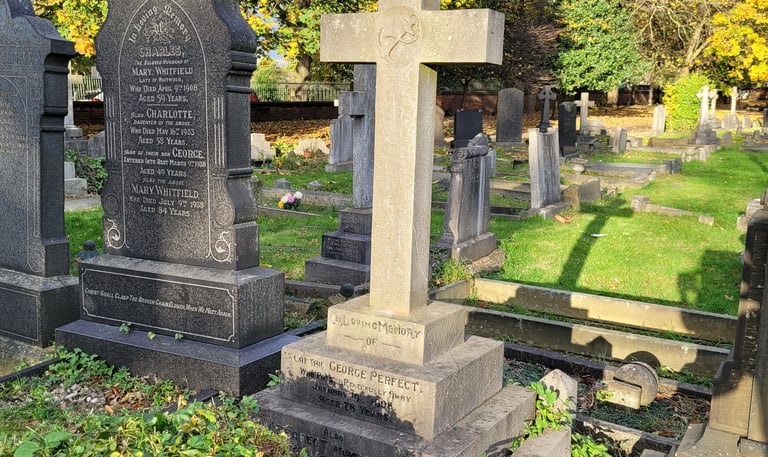

Cemetery Trail grave location Q
A walk around the cemetery will reveal a number of gravestones commemorating a ‘mariner’ or a ‘waterman’. Even after the railways had come to dominate passenger and freight transport, the country’s inland waterways and coastal shipping routes continued to thrive as the overall market grew – and they played a big role in Castleford’s 19th century economy.
The town stood in a crucial location on the Aire & Calder Navigation (A&CN) system, a busy transport artery linking the industrial West Riding with Goole and Hull. The first stretch of canal in Castleford – a short cut bypassing the weir on the River Aire – opened in 1699. Most of its route has long since been filled in and built over, because in the 1820s and 1830s the company made big investments ....more
WATERWAYS: CAPTAIN GEORGE PERFECT
EDUCATION: CHARLES SANITER
Cemetery Trail grave location P
Charles Saniter lived for a significant part of his life, died and was then buried within sight and playing-field sound of Castleford Grammar School. However, although he only taught there for eight years before his premature death, this was not his only contribution to education in the town.
Before joining the staff of pioneering headteacher T R ‘Toddy’ Dawes when the school opened in 1906, Saniter had run a private grammar school, on Bank Street, for several years. Prior to the passing of the 1902 Education Act, there was no local authority funding of secondary education, so any pupils wishing to continue their schooling after the age of 11 had to do so privately and, of course, pay fees for the privilege. Although the vast majority of Castleford children at this time received only an elementary education and left school to start work as soon as the law allowed, nevertheless there were enough ....more
